Few teas that sit in my collection of leaves have ever not made a journey with me, accompanying me as a stimulant companion, ally, and vegetal mate. It is a kind of rite of passage to be taken, prepared, and enjoyed in another temporary place or simply on the move. Teas that are made on a consistent basis in the same kettle in the same kitchen, with the same attention are wonderful…but they are the predictable panacea that they need to be. A tea that travels needs to be something a little bit more. It needs to have something akin to a special appeal or something uncertain. Maybe strength, maybe outrageous strength, sometimes simply a stimulant tea, and sometimes simply a tea that comforts; whatever the tea, travelling is an erratic and informal test of what a tea really means.
In the past months, one tea has been tucked away in its mulberry handmade tea paper (which itself remains in an inauspicious clear blue sandwich bag from IKEA) in my possession while I roamed Yunnan, New York, Hong Kong, Hawaii, and Canada’s familiar winter cold. It remains with me still here in Hawaii – where in just a few short days I will depart – to the very place this tea was born. It will remain here while I travel back to its soil, its space, and its wonderful maker. The tea is Lao Banzhang Pu erh (also often spelled Puerh or Puer)
It is a little over a year since I acquired the magnificent cake from my mentor, Master Gao. Friend and fellow lover of the leaf Marco Zamboni Zalamena and I were both gifted cakes for assisting in last year’s Spring harvest which not only allowed us to sweat with the leaves, but also to care, handle, and learn about the leaves (all under Gao’s soft brown gaze). It also provided a wonderful look into how a master looks at leaves.
We ate, slept, sipped, chatted, and lived tea in Lao Banzhang village. It is a town transformed by the income that has come into it in the past years. Where once there were small homes with slats, sitting on stilts, there now are expansive homes that widen and grow yearly. Our stay however is much like my annual trips to the town. It was a no less than a debauched and sleepless feast of liquids that found their origins in the forests that surrounded our mentor’s home. One of my long loved tea hunting grounds, Ban Zhang, lies high up in the Pulang/Bulang Mountains of southern Yunnan province along the Burma border. Sub-tropic, with soft cool winds, armies of hens and their chicks and the odd wild boar share the earth with its indigenous Hani and Bulang dwellers.
The tea, a Lao Ban Zhang Pu erh from unfermented autumn harvest from 2012, was from ‘ancient’ trees and in my own frame of reference beyond any amount of money. Of tremendous monetary value, yes, but what set it apart was that it was a tea Marco and I had been introduced to by Master Gao, and described it in the immortal and typically understated words, “It is very good, and it is the tea I take before I sleep. I need a good tea before I sleep”. While not from one of the fabled Spring harvests Gao’s palate rested somewhere in the realm of ‘beyond reproach’. Though every palate is different, absorbing flavours, tannins, theanine, and the multitudes of mineral power, every tongue takes and enjoys differences in punch, bitterness and vegetal potency.
This tea that Marco and I took in every evening was a kind of beautiful peak for our respective tastes and it would become the tea that I began to covet. There was also this notion that these leaves had been shared by someone I’ve long looked at as a rare vestige of authenticity in the tea world. The world of tea as it expands is – like so many trends – risks being enveloped by many who know less than little about tea, its home, and its cultural roots.
Red clay soils, the Hani people’s competent and integral hands, and a ‘name’ make Banzhang teas sought after, pricey, misunderstood, and obsessed over.
Where Jing Mai teas coax and charm with gentle floral notes, and where Meng Song teas deliver a power blast of tangible almost reckless power, Lao Ban Zhang Pu erh seems to impart a bit of everything hitting so many vital requirements.
In my home in Shangri-La (Zhongdian) in northwestern Yunnan province, I made it first upon my small tea table, with water harvested from a nearby mountain spring. Tea always seems to impart a different sensation when one prepares it oneself. It still rattled the system with its strength when I prepared it, but this time other more floral essences were felt. Infusion after infusion continued to expand and some of the inherent magic of the ancient tea trees’ leaves released themselves. It is a tea that is remarkable in its ability to continually expand and grow. Adding onto the raw materials, was the production perfection of Master Gao. Neurotic, calm, and relentlessly drilled into a kind of walking meditation while creating the teas, his are creations that are consistent and patient. Not only is he acknowledged by the buyers, he is looked at as a divinity by other growers from surrounding mountains and towns.
Canada offered up another opportunity to sample Banzhang’s elegantly powerful leaves. It seemed that it was almost impossible to brew the tea too strongly – though of course, I tried. The Ban Zhang has strength but it is a distinguished power and one that isn’t lacking in subtleties. It was again remarkable in that it could be wide-ranging with floral hints and yet remain unrepentant in its strength.
In Hawaii’s soft winds and heat, Ban zhang was a tea that forced one seasoned tea drinker friend from Japan to comment: “What is special is how the initial bitterness eases into a sweetness and leaves the mouth wanting more”.
New York’s gentle and not-so-gentle chaos allowed for a tea time in a little loft to slow down…before being revved up. So often tea’s stimulant capacity is looked at as something negative and yet it was this very capacity to serve as a natural fuel for the body that is coveted within true tea circles.
Master Gao’s words on tea and its world and influences were never far from my mind and his words on why a “good” tea was “good” were demonstrative and revealing. During a late night tea session with him at his home in the Pulang/Bulang Mountains with night’s fragrances wafting in and the chirpers of the night in full chorus his soft voice floats out words: “good trees”, “time”, “traditional methods”, “mistakes”. All of these impart to a tea’s ultimate qualities along with many more technical items. Gao’s words have never reeked of pretension because they don’t need to. He considers everything slowly and only speaks when he has something to mention or respond to. The closest to anything resembling anger I’ve seen from him is when a particular stock of withering leaves had been stacked too high (which can cause a sour note to a final tea), or when on another occasion I wasn’t expelling enough moisture from leaves when wringing them after a fry. Gao was not a man whose ire I wanted to incur at any cost but tea appeared to be one thing that might push him over the edge.
Ban Zhang town has now reached the kind of status that the Champagne region of Burgundy has within Puerh tea fanciers. Fakes abound, and false information runs rampant, but if the source is to be trusted and the palate respected, a genuine Banzhang regardless of the ‘age’ is worth sampling.
Gao once again has a last word on this: “As long as you know what you enjoy and what a good tea should taste like as a reference point, it doesn’t matter what anyone thinks”. I don’t mention the fact that his least desired teas are sold out a year in advance and that his fresh Spring harvests of ancient tree Puerh’s rarely sell for less than $800.00 per kg. His philosophy though has been consistent for years and long before he was a known producer of some of the finest Puerh teas, he was still the quiet, immaculate, and confident being as he is now. Indeed, he seemed to know intuitively that his offerings were masterpieces. Quality in some wonderful and rare instances is entirely quiet in its origin and that makes it so much more trustworthy.
His summer 2012 harvest remains beside me still puffing out its little hot humid wafts from a cup waiting to feed once again. A half cake remains and it will be stored for the next months so that I don’t polish it all off…to wait for another day to sate some more, or until I’m offered up another cake as a gift.

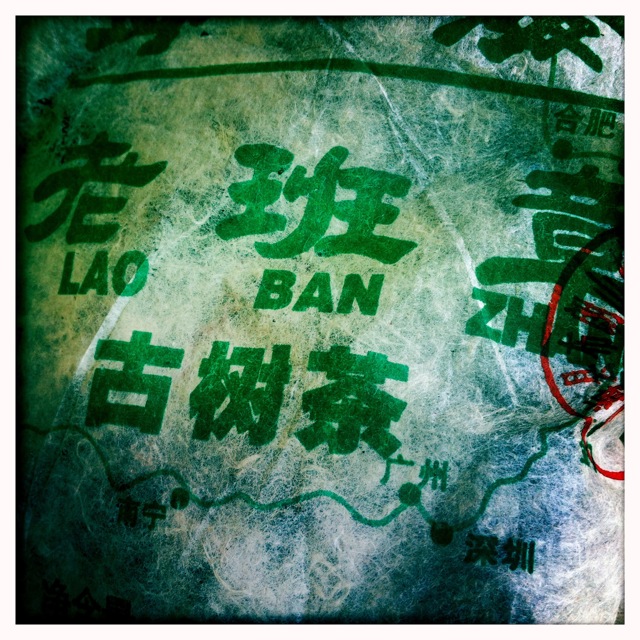

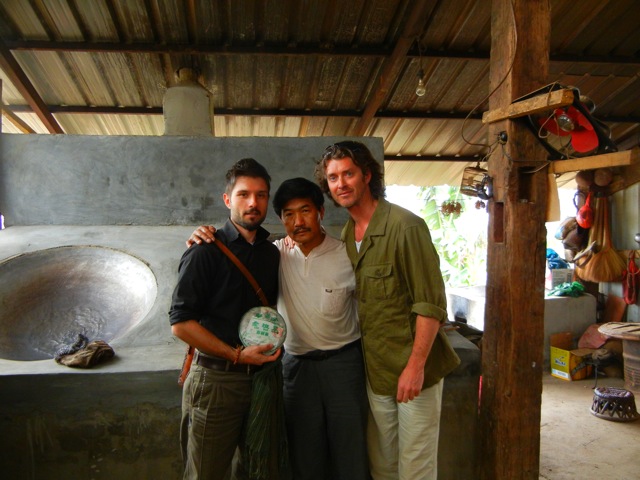
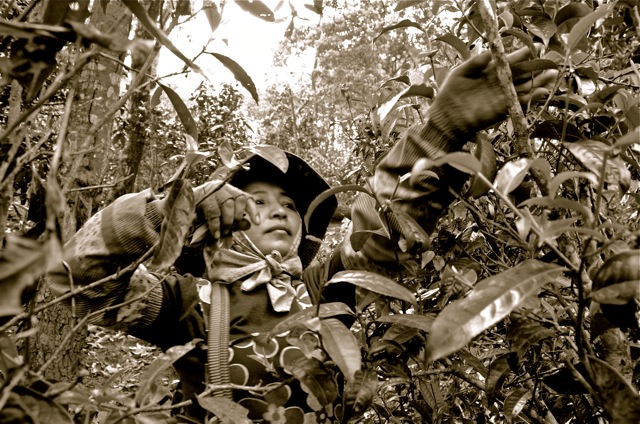
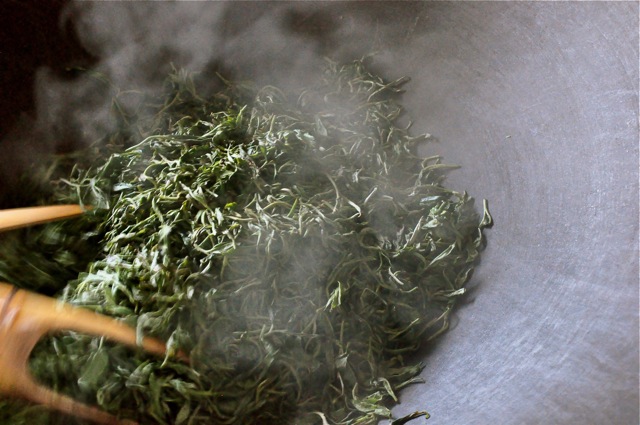

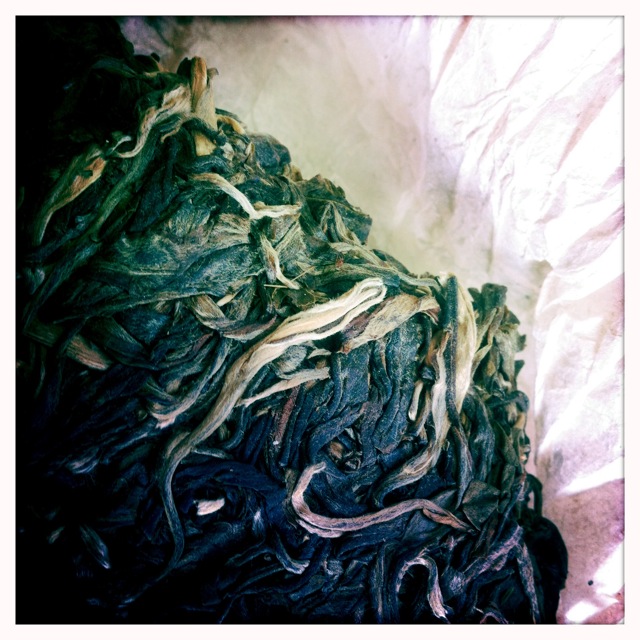
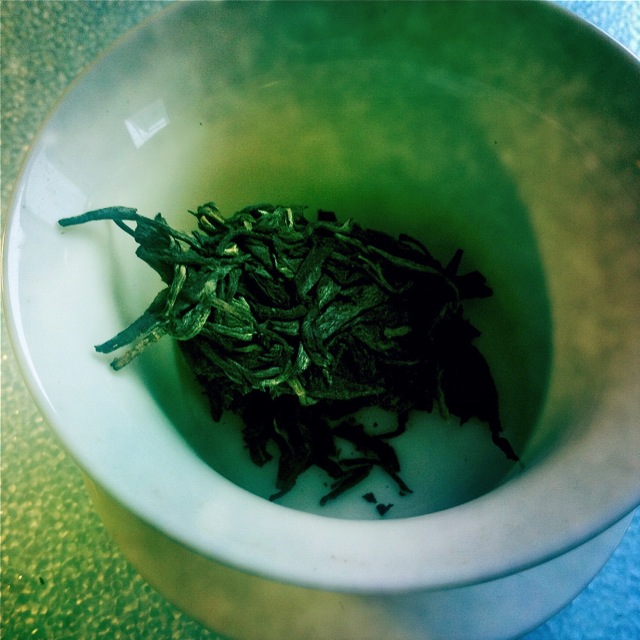
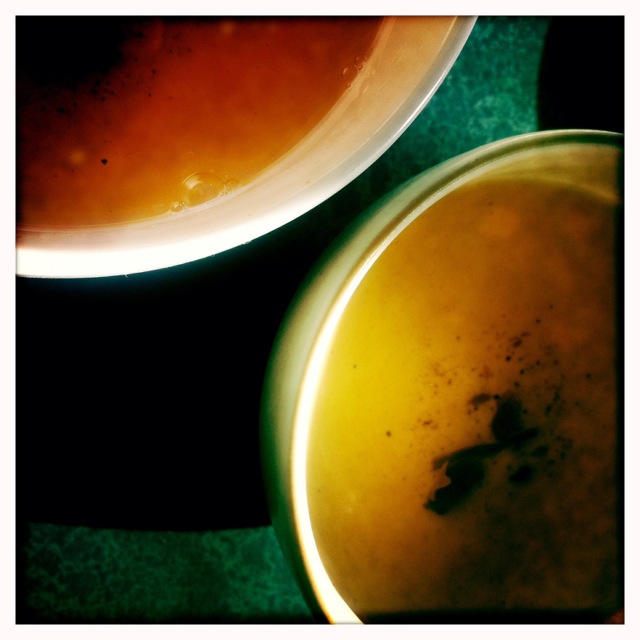
A very pleasant reading. Thank you sir.
Glad you joined.
Jeff
Thanks for the immersion Jeff.
Drinking your teas with your stories amplifies the experience.
Brewing Ban Zhang as I write. Adventure abounds !
And thanks for joining Doug.
Hope the Ban Zhang sips were enjoyed.
Jeff